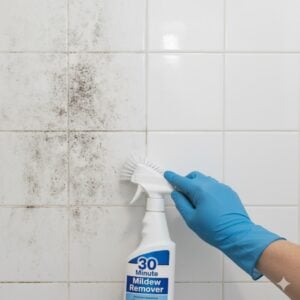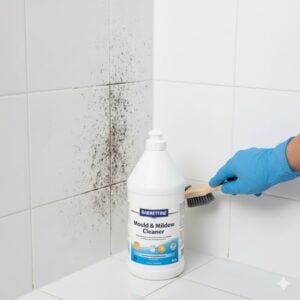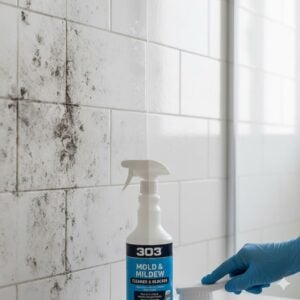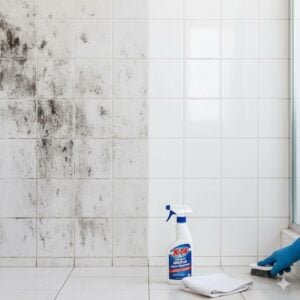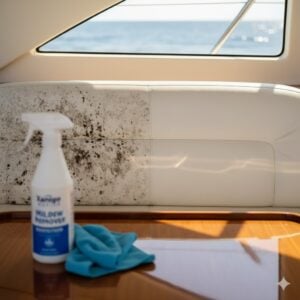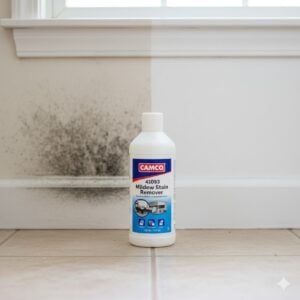Hello there! Have you ever walked into a room only to be greeted by an unwelcome guest: a musty mold smell? It’s not just an unpleasant scent; it can also be a sign of deeper issues within your home or office, especially here in the UAE, where the climate can contribute to mold growth. This problem is more than just a nuisance; it’s a health hazard.
That’s why tackling it head-on is crucial. In this article, we’ll explore five innovative and effective strategies to banish that pesky mold smell, ensuring your space goes from musty to fresh. Join us on this journey to a cleaner, healthier environment. Your well-being is our top priority, and we’re here to guide you every step of the way.
Table of Contents
Toggle#1 Identify and Eliminate
Understanding mold smells begins with recognizing that these odors are more than just unpleasant; they are telltale signs of a potentially larger issue at play within your living or working spaces. Mold smells often manifest as musty, earthy odors, reminiscent of damp basements or wet socks. This distinctive scent is caused by the presence of mold and mildew, fungi that thrive in moist environments. Given the hot and humid climate of the UAE, buildings are particularly susceptible to mold growth, which not only damages property but can also pose serious health risks.
Mold reproduces through tiny, airborne spores that prefer damp, warm conditions. When these spores land on a wet surface, they begin to grow and multiply, producing mycotoxins that are responsible for the musty odor. These odors are not just indicators of the mold’s presence but are also warning signs that the air quality in the space may be compromised. Prolonged exposure to mold and its odors can lead to a variety of health issues, including respiratory problems, allergies, headaches, and even more severe conditions like asthma exacerbation. Therefore, it’s critical to address mold smells as soon as they’re detected, to mitigate health risks and prevent further mold proliferation.
Identifying the source of mold smells involves a thorough inspection of your home or office. Common areas where mold tends to hide include bathrooms, kitchens, basements, around windows, and in air conditioning units. Mold can also lurk behind wallpaper, in carpeting, and inside walls or ceilings, especially where there has been previous water damage. Because mold can grow in hidden areas, it’s often the smell that alerts occupants to its presence before it becomes visible.
Once mold is suspected due to its distinctive smell, the next step is to visually confirm its presence. Mold can appear in a variety of colors, including black, white, green, or orange, and it may look fuzzy or slimy. If you spot any suspicious areas, it’s important to not disturb them, as doing so can release a large number of spores into the air, exacerbating the problem.
Addressing mold smells at their source requires a combination of moisture control, thorough cleaning, and sometimes professional remediation. The first step in this process is to eliminate any existing water leaks or sources of dampness, as controlling moisture is critical to preventing mold growth. Regularly inspecting plumbing, roofing, and windows for leaks and ensuring proper ventilation can significantly reduce the risk of mold developing.
In summary, mold smells are not just a nuisance; they signal an underlying issue that needs immediate attention. Identifying and eliminating mold at its source is crucial for maintaining a healthy living environment. Understanding the causes and health implications of mold smells is the first step toward safeguarding your home or office against the adverse effects of mold.
#2 Ventilation and Humidity Control
Once you’ve identified the distinctive musty odor of mold in your environment, the next critical step is pinpointing the exact locations of mold growth and understanding the best practices for safe removal. Identifying mold involves more than just recognizing its smell; it requires a systematic approach to locate all the affected areas, including those not immediately visible.
Start by inspecting areas where moisture accumulates or where water damage has previously occurred. These are the places mold loves to call home. Look for visible signs of mold growth, which may present as discolored patches on walls, ceilings, or floors, ranging in color from black and green to white or orange. Don’t overlook less obvious spots such as under sinks, behind appliances, within ventilation systems, or under carpets. Sometimes, the only indication of mold will be its smell, necessitating a more thorough investigation.
For areas that are difficult to assess visually, consider employing moisture meters to detect unseen dampness in walls, ceilings, and floors. Infrared cameras can also be useful tools in identifying variations in surface temperatures, which may indicate the presence of moisture behind structural materials. These technological aids can help in mapping out the extent of moisture penetration and, by extension, potential mold growth areas.
Safe mold removal practices are paramount to ensuring the health and safety of occupants and workers. For small areas of mold (less than about 10 square feet), DIY removal can be effective. This includes scrubbing the mold off hard surfaces with detergent and water and then allowing the area to dry completely. Always wear protective gear, such as gloves, goggles, and an N95 respirator, to avoid exposure to mold spores.
For larger infestations or if mold is found in HVAC systems, it’s crucial to hire professionals who have the expertise and equipment to safely remediate the problem. Professional mold remediation involves several steps, including containing the affected area to prevent the spread of spores, using HEPA vacuums to remove spores from the air, and applying antimicrobial treatments to eliminate mold at the source.
The importance of addressing the underlying cause of moisture cannot be overstated. Without rectifying the source of dampness, mold will likely return, even after thorough cleaning. This may involve repairing leaks, improving ventilation, or installing dehumidifiers in high-humidity areas.
In conclusion, identifying and safely removing mold requires a careful and informed approach. By accurately locating mold growth and employing safe removal techniques, while addressing the root cause of moisture, you can protect your home or office from the health risks and structural damage mold can cause. Always consider professional assistance for extensive mold issues to ensure a safe and effective remediation process.
#3 Natural Remedies for Mold Odor
Optimizing ventilation and controlling humidity are pivotal strategies in the battle against mold growth and the pervasive odors it produces. Mold thrives in moist, stagnant air conditions, making effective airflow and humidity regulation essential preventative measures for maintaining a mold-free environment.
Firstly, ensure that your home or workplace is well-ventilated. This can be achieved by regularly opening windows and doors to allow fresh air to circulate, effectively diluting and displacing stale, moisture-laden air. In areas where natural ventilation is limited, mechanical solutions such as exhaust fans, especially in high humidity areas like bathrooms and kitchens, can significantly reduce moisture levels. It’s important to ensure that these ventilation systems exhaust directly to the outside and not into attic spaces or between walls, where it could inadvertently contribute to mold growth.
The use of dehumidifiers is another critical strategy in controlling indoor humidity levels. Ideally, indoor humidity should be kept below 60% to inhibit mold growth. Dehumidifiers can be particularly effective in damp areas of the home, such as basements, which are prone to elevated humidity levels. For larger spaces or in regions with high ambient humidity, whole-house dehumidification systems integrated into the HVAC system may offer a more comprehensive solution.
In addition to mechanical ventilation and dehumidification, simple daily activities can also contribute to moisture control. For instance, taking shorter showers, drying clothes outside (or in a vented dryer), and using lids on pots while cooking can all help reduce indoor humidity. Additionally, maintaining your HVAC system and ensuring that air conditioning units are properly serviced can prevent moisture buildup and improve indoor air quality.
It’s also beneficial to regularly monitor indoor humidity levels with a hygrometer, a tool that measures the amount of moisture in the air. This can help identify problem areas or times of day when humidity levels are at their peak, allowing for targeted interventions.
Remember, while ventilation and humidity control are powerful tools in mold prevention, they should be part of a broader strategy that includes identifying and rectifying sources of moisture intrusion, such as leaks or condensation. By combining these approaches, you can create an indoor environment that is not conducive to mold growth, protecting your property and health from the adverse effects of mold and its unpleasant odors.
#4 Deep Cleaning Strategies
Turning our focus to natural remedies, there’s a treasure trove of solutions that can help tackle mold odors without relying solely on chemical interventions. These methods not only aim at odor removal but also at inhibiting mold growth, using ingredients that are often already available in your home.
Vinegar is a potent ally against mold. Its acidic nature breaks down the structure of mold spores and kills them. For a simple yet effective mold cleaning solution, mix equal parts of white vinegar and water in a spray bottle. Apply generously to the affected area, let it sit for an hour, and then wipe clean with water. This method is particularly useful for hard surfaces like tiles, walls, and countertops. Although vinegar has a strong odor of its own, it dissipates quickly, leaving your space fresher and less hospitable to mold growth.
Baking soda, another household staple, offers both moisture-absorbing and mild abrasive qualities, making it an excellent choice for mold odor removal and prevention. A mixture of baking soda and water can be applied to moldy areas to scrub away growth and absorb lingering odors. For ongoing moisture control, placing bowls of baking soda in damp areas can help keep the environment dry and less prone to mold.
Essential oils, particularly those with antifungal properties like tea tree oil and clove oil, can also be effective in combating mold and its odors. A few drops of these oils mixed with water can be sprayed onto affected surfaces or used in diffusers to purify the air and impart a pleasant fragrance. Not only do they help in addressing mold problems, but they also create a more inviting living or working space.
Leveraging these natural solutions offers several advantages. They are environmentally friendly, less likely to cause damage to surfaces or health issues for occupants, and can be used regularly as part of a preventive maintenance routine. Additionally, they provide an immediate action plan that can be implemented while deciding on further steps, whether that’s a deeper clean or professional remediation.
It’s important to note that while natural remedies can be remarkably effective for minor mold issues and odors, they may not be sufficient for severe infestations. In cases where mold has penetrated deeply into porous surfaces or structural elements, professional assessment and treatment may be necessary to fully resolve the issue.
Incorporating these natural solutions into your mold prevention and remediation efforts can help maintain a healthier indoor environment, reducing reliance on harsh chemicals and contributing to overall well-being. Whether used independently for small-scale issues or as part of a comprehensive mold management strategy, natural remedies are an essential tool in the fight against mold and its accompanying odors.
#5 Preventive Measures
Deep cleaning is a critical component in the battle against mold and its odors, serving as both a remedial and preventative measure. This approach goes beyond surface cleaning, targeting mold at its source and removing the conditions that allow it to thrive. Whether you choose to undertake this task yourself or call in professionals, understanding the depth and breadth of what’s involved is key to ensuring the longevity of a mold-free environment.
For DIY enthusiasts, deep cleaning involves a thorough scrubbing of all surfaces, not just those visibly affected by mold. This includes walls, floors, and fixtures in kitchens and bathrooms, as well as less obvious places like inside cabinets, behind appliances, and under sinks. It’s crucial to use cleaning solutions that are effective against mold, such as diluted bleach, vinegar, or commercial mold-killing products. After cleaning, surfaces must be completely dried, as any residual moisture can lead to the recurrence of mold growth.
However, there are situations where DIY efforts may not suffice, particularly in cases of extensive mold infestation or when mold is located in hard-to-reach areas, like inside walls or ventilation systems. Here, professional mold remediation services are indispensable. These experts bring in specialized equipment, such as HEPA vacuums and air scrubbers, to remove mold spores from the air and contaminated surfaces. They also have the capability to identify and rectify the underlying moisture issues that contribute to mold growth, ensuring a comprehensive solution.
In deciding between a DIY approach and professional help, consider the extent of the mold problem, the potential health risks, and the possibility of hidden mold within structural elements. While professional services represent an upfront cost, they can offer peace of mind and long-term savings by effectively addressing the issue the first time around.
For ongoing mold prevention, regular deep cleaning schedules should be established, focusing on areas prone to moisture and humidity. This includes routinely inspecting and cleaning HVAC systems, dehumidifiers, and any areas previously affected by mold. Ensuring that your home or workplace remains clean and dry is essential in preventing the conditions that allow mold to flourish.
In addition to cleaning, incorporating moisture control strategies, such as improving ventilation, fixing leaks, and using dehumidifiers, can further safeguard your environment against mold. Remember, the goal of deep cleaning is not just to remove mold but to create conditions that are inhospitable to its growth.
Ultimately, whether tackling mold through DIY efforts or with the help of professionals, the focus should be on thoroughness, prevention, and addressing the root causes of moisture. By doing so, you can maintain a healthier living or working space, free from the detrimental effects of mold and its unpleasant odors.
Why Bio On is Your Mold Smell
Bio On stands as your premier solution for mold remediation and odor removal, thanks to its comprehensive approach that combines advanced technology with expert knowledge. With a deep understanding of the unique challenges presented by the UAE’s climate, Bio On tailors its services to effectively tackle mold at its source, ensuring long-term relief from musty odors and the potential health risks they pose.
The team’s commitment to using environmentally friendly and health-conscious methods means that your space is not only cleared of mold but is done so in a manner that safeguards your well-being. For anyone facing mold-related issues, Bio On offers a reliable, professional, and effective service, underscored by a 24/7 availability for free consultations, making it an accessible solution at any time.
Conclusion
In conclusion, effectively removing mold smell from your environment is crucial for maintaining a healthy and comfortable living or working space. By identifying and eliminating mold, optimizing ventilation, employing natural remedies, conducting deep cleaning, and taking preventive measures, you can achieve a mold-free environment. However, for pervasive issues or to ensure a comprehensive approach, turning to the expertise of Bio On is advisable. With specialized knowledge and the right tools, Bio On addresses mold at its source, providing lasting solutions. If you’re battling with mold smells or concerned about potential mold growth, don’t hesitate to reach out to Bio On’s team via the WhatsApp button for a free consultation, ensuring your space remains fresh and safe.








